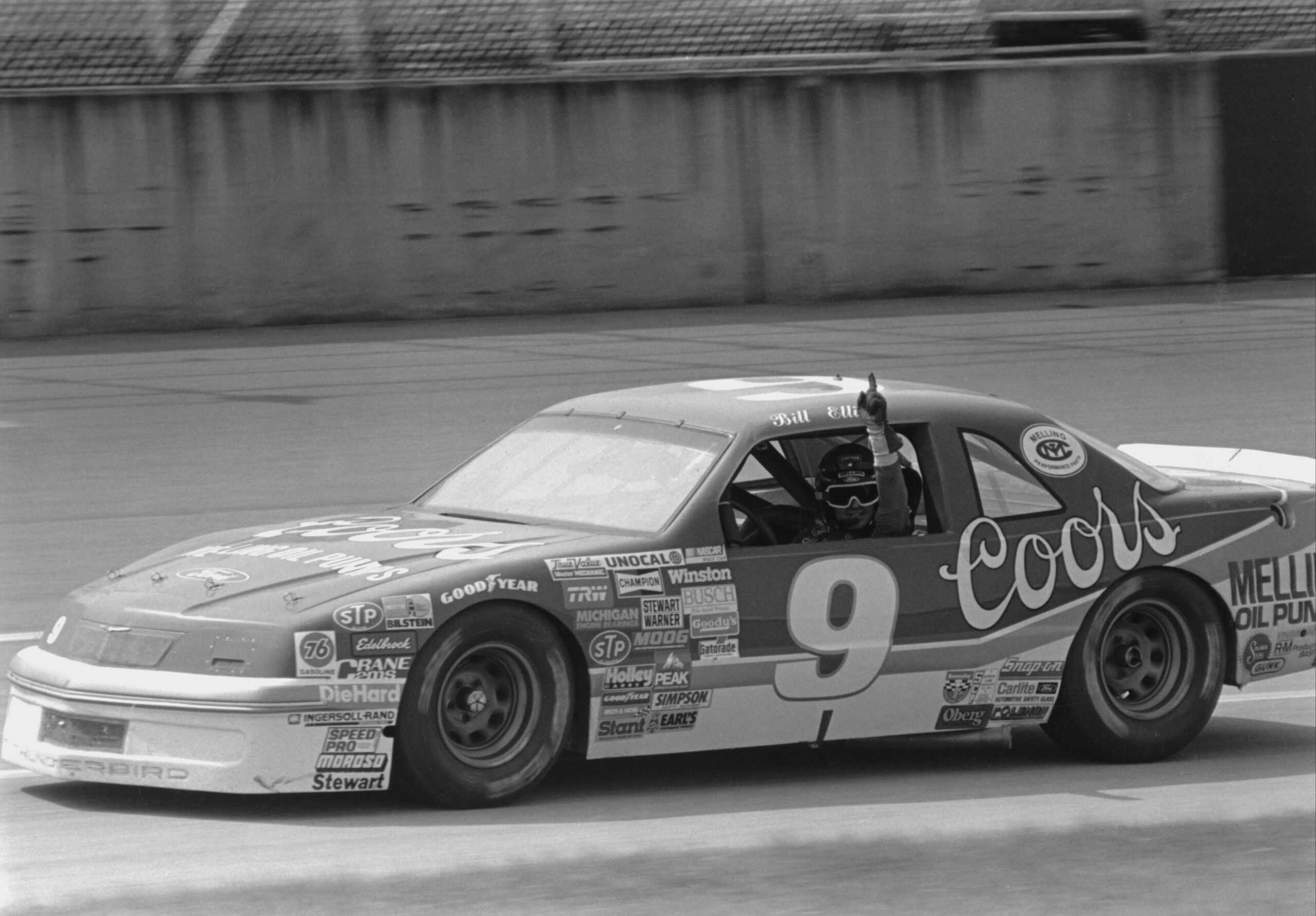RICHMOND, Va. — Yesterday at Richmond International Raceway marked the end of the first quarter to the new era of NASCAR, so I thought I’d give my take on how it’s turned out.
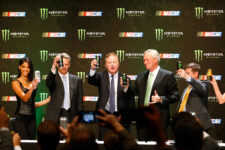
For all intents and purposes, the 2017 season really began on December 1, 2016 with the, at the time, worst kept secret in NASCAR. At the Wynn Las Vegas luxury hotel, in the midst of NASCAR’s Championship Week Banquet sendoff to exiting Cup Series sponsor Sprint, it was officially announced that Monster Energy would take over as the new entitlement sponsor of the Cup Series.
Monster Energy, a company that targets younger consumers and fans of extreme sports, was to say the least an odd choice. It made sense for NASCAR to want to bring aboard Monster Energy with the sport’s aging demographic. But it didn’t make sense, to me anyway, why Monster Energy had any interest in doing business with NASCAR, especially when the sport is in a decade-long television ratings decline. Yes I’m aware they’ve sponsored Kyle Busch in the XFINITY Series and Kurt Busch in the Cup Series, but sponsoring individual drivers with their own fanbases isn’t the same as sponsoring the sport in which they compete. The Busch brothers, being of a Generation-X age, draw a much different age group of fans than the sport itself.
However, I kind of had that question about Monster Energy’s motive answered by Mark Hall, chief marketing officer for the company, if they would go after the exiting, and markedly older NASCAR audience, compared to the consumers Monster Energy targets.
“There’s really — there’s two answers to that question,” Hall said. “Young people set trends in fashion, and then older people adapt, and I don’t want to say old. Fashion is set by a small group of influencers. The challenge is to make your product relevant to that group and then have them influence the others. If we’ve been successful in the past, we’ve followed that model. I think we have a lot of drinkers in the current NASCAR fan base. I think we can make the sport more interesting to some younger consumers, as well.”
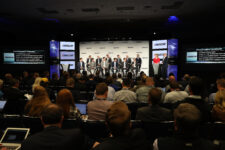
The next major plot point of the 2017 season was at the Charlotte Convention Center on January 23, 2017 with the drinking word of the offseason, “enhancements.” NASCAR was crystal clear to use the word “enhancement(s)” in place of change(s) this time around.
At this point, we all know the “enhancements” included stage racing and giving winners of the race and stages points specifically that would be added to your total at the start of the Chase, oh I’m sorry, “playoffs.” Yeah that was also another “enhancement” for 2017, dropping the name “Chase” and using the generic “playoff” term instead. Playoffs were so radically different from the “Chase,” despite the fact virtually nothing was changed about the system formerly known as the “Chase,” that the name “Chase” no longer seemed warranted.
All this wording was totally naturally, and not a cynically manipulative ploy by the sanctioning body to make this lead balloon go over much easier.
Despite all of that, I still decided, “What the hell? I’ll see where this goes.”
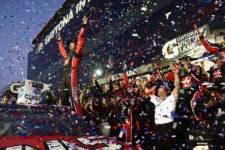
The third plot point of this story was on Sunday, February 26, 2017, the day of the 59th running of the Daytona 500.
The Daytona 500 is NASCAR’s biggest race, held on it’s grandest stage, Daytona International Speedway. It’s the culmination of an offseason of work by all departments of the race shops located back in Charlotte (or Denver in the case of Furniture Row Racing), and the culmination of Speedweeks (from January (Rolex 24) to the Daytona 500).
The success, television-wise, sets the tone for the rest of the season more often than not with the ratings of the rest of the races to come.
The 2017 Daytona 500 was perhaps the most critically important race in the history of NASCAR. As I mentioned earlier, the sport is in the midst of a long slide in ratings, and I, as well as many other NASCAR writers, consider this season a make or break year for the future sustainability of the sport.
To make a long story short, this year’s Daytona 500 absolutely HAD to deliver at all costs.
So what were the results? It too soon to tell.
Let’s discuss the most important aspect of a race, the race itself. How did this year’s running of the Daytona 500 fare out with stage racing?
From start to finish, and I mean this with all sincerity, that was the most entertaining restrictor plate race I’ve watched in a long, long time.
The intensity was there, even for the lead, almost every single lap. It had the pack racing, drafting and carnage you’d expect from a race at Daytona International Speedway and Talladega Superspeedway.
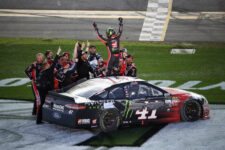
Chase Elliott is on his way to his first career victory on the sport’s biggest stage when he runs out of gas. Martin Truex Jr. takes over the lead, and then he runs out of gas. Kyle Larson takes the lead coming to the white flag, and he runs out of gas.
Taking the lead exiting Turn 2 is Kurt Busch.
The story writes itself.
Busch, a driver who started his Cup Series career receiving the middle finger salute, courtesy of Dale Earnhardt, in the 2001 Daytona 500, two years ago, two days prior to the Daytona 500, was banned from NASCAR for alleged domestic abuse (of which no charges were pressed), one of the most talented drivers of the 2000’s takes the lead on the final lap of one of the most important races in NASCAR history and wins the Daytona 500.
This race alone was so great that any driver winning it would’ve made a great story, but the fact that it was won by a man who’s very life, both professional and personal, is worthy of an ESPN 30 for 30 documentary feature, is the best part. As someone who’s watched Kurt his entire NASCAR career, as a race fan during the years he was king at Bristol Motor Speedway and as a member of the media, I take great joy in knowing I saw his entire story arc play out (on the NASCAR side).
But as happens every year, when Daytona ends, the grind of the season truly starts.
As a seasoned NASCAR observer, both as a fan and scribe, I know that Daytona, and plate racing, is its own animal.
But there was no denying that stage racing and playoff points made the racing more intense than usual, to the point where the usual problem of passing the lead car was not a major problem (also thanks to Brian France warning against drivers blocking in response to a fustercluck of an XFINITY Series race at Daytona the day prior).
So I thought if cars could pass with ease at Daytona where it’s hard as hell to pass for the lead, then we’re in for one hell of a race at Atlanta, where passing is much, much easier.
Well a few hours, I’d say two, after the Cup race, Jeff Gluck and I were “shooting the bull” about the race at the exit of pit road. We both thought stage racing was going to turn the intensity “up to 11,” like we saw at Daytona. We both agreed, however, that around halfway, the intensity wasn’t always going to be “up to 11.” It’s just going to be the same old product we’ve been getting, especially on the mile and a half’s.
Thus started the “some notable moments in an otherwise forgettable race” trend we’ve experienced outside the short tracks.
The first was the finish to Atlanta.
Gluck asked me what I thought of the race overall. I said,”It was average for Atlanta, and that was with the way it ended with (Kevin) Harvick’s speeding penalty. Take that out of the equation and Harvick wins this, I don’t think this race registers.”
“Oh agreed,” Gluck replied. “It’s basically Truex at Charlotte if Harvick wins this.”
Then came Las Vegas. Keselowski has a part failure and Truex wins, which is overshadowed by a, let’s call it, fight on pit road between Kyle Busch and Joey Logano, of which Gluck captured the best video.
Phoenix sees Ryan Newman snap a four-year winless drought with a decision to stay out in the final laps.
Fontana delivers Kyle Larson his second career victory and demonstrates he’s truly a threat to win the championship this season.
Martinsville hands down was not only the best race of the season, but also my favorite race to ever cover. You have cars making the outside groove at MARTINSVILLE of all places work, Ricky Stenhouse Jr. bumping Kyle Busch out of the way to stay on the lead lap, allowing Chase Elliott to win the stage and a 10-lap duel for the win between Kyle and Brad Keselowski with less than 50 laps remaining that saw Keselowski win the race.
Texas showed us Jimmie Johnson is still arguably the greatest driver in NASCAR history and is going nowhere. It was also the breakout race for Ryan Blaney, who led 148 of 334 laps and won two stages, but finished 12th thanks to a bad pit stop.
Bristol, when I wasn’t getting soaked trying to get from my car in Lot E by the drag strip to the deadline room and press box, was a good race as Bristol always is, but not as great as everyone said. Either way, it was fun to watch the events that led to Johnson win yet again on a Monday afternoon in Tennessee.
Finally there was Richmond.
It was…good. Like Bristol, it wasn’t anything spectacular, but it was still a short track race that delivered excitement. In the end, it was Joey Logano who scored the checkered flag.
I said during the media tour that I would give some time to see how stage racing plays out. After one quarter of the season is complete, I love stage racing. But I’m not convinced it’s the direction that’ll resuscitate the ailing television ratings, especially when the ratings continue sliding down after eight races (Richmond’s rating wasn’t available when this was posted).
So how will it play out during the second quarter, we’ll just have to see.
That’s my view for what it’s worth.

